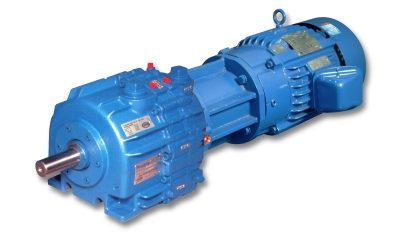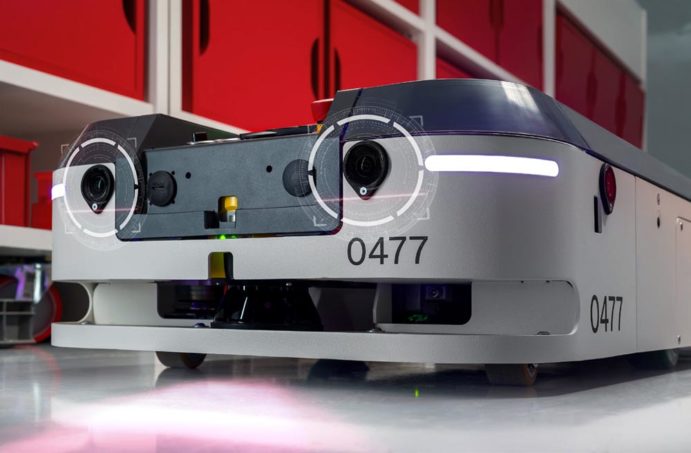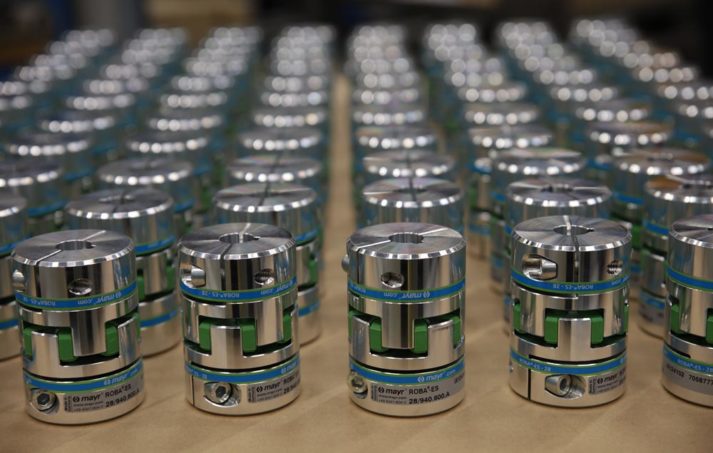Force Control Posidyne Clutch Brakes Reduce Motor Shaft and Keyway Damage

Posidyne long coupled C-Face clutch brakes from Force Control Industries are an excellent option for high cycle (50 to 300 CPM) applications because they eliminate the damage to keyways and motor shafts that commonly occur. When indexing with a clutch brake, each clutch engagement transfers a torque spike to the connection between the motor shaft and the input shaft of the clutch brake. High cycle applications can cause continuous, severe, hammering on the shaft connection of the motor to the clutch brake. For convenience and ease of assembly, a standard C-Face connection is often used. In this arrangement, the motor shaft installs into the hollow bore of the clutch brake input shaft. However, the loose fit required for ease of assembly causes all of the torque to transfer through the key and keyway, resulting is early failure. A coupling that is shrink fitted or clamped to both shafts for a 360° connection transfers the torque through the shaft and not just the key. The long coupled Posidyne clutch brake offers both the simplicity of C-Face mounting, and the tight fitting coupling.
Posidyne clutch brakes feature oil shear technology that allow rapid and precise stopping, starting, reversing, speed change and positioning – all without adjustment and virtually no maintenance. Ideal for applications with frequent start/stop cycles, these unique motion control devices allow higher cycle rates (as high as 300 cycles per minute), increased production rates, all while reducing downtime. Higher production rates coupled with significantly longer service life than traditional (dry) clutch/brakes (5 to 10 times longer in many cases) yields increased uptime, and improved productivity. No adjustment, virtually no maintenance, multi-year service life, minimal parts inventory, reduced parts and replacement ordering cost, adds up to higher production at significantly lower maintenance costs.
Designed with low inertia cycling components makes the Posidyne clutch brake more efficient, requiring less motor horsepower to accelerate the load, and less torque to stop the load. Their totally enclosed design is impervious to dust, chips, chemicals, coolants, caustic wash down, weather, and more, making them ideal for hostile environments. They are field proven in diverse applications such as lumber mills, shingle plants, fiberglass insulation production, food processing, packaging, metalworking, and more.




